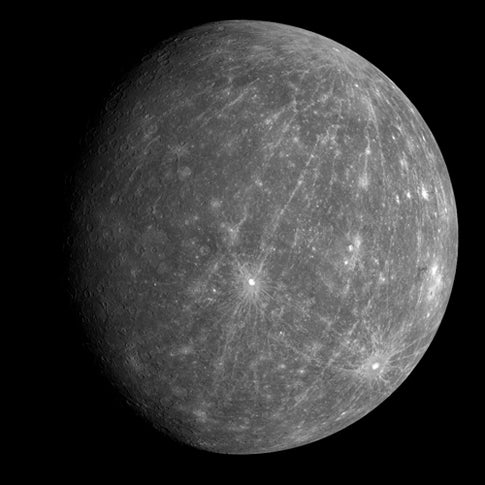“The MESSENGER team is extremely pleased by the superb performance of the spacecraft and the payload,” said MESSENGER Principal Investigator Sean Solomon of the Carnegie Institution of Washington. “We are now on the correct trajectory for eventual insertion into orbit around Mercury, and all of our instruments returned data as planned from the side of the planet opposite to the one we viewed during our first flyby. When these data have been digested and compared, we will have a global perspective of Mercury for the first time.”
On October 7, at about 1:50 a.m. EDT, MESENGER turned to Earth and began transmitting data gathered during its second Mercury encounter. The spectacular image on the right — one of the first to be returned — was snapped by the Wide Angle Camera (WAC), part of the Mercury Dual Imaging System (MDIS) instrument, about 90 minutes after MESSENGER’s closest approach to Mercury, when the spacecraft was at a distance of about 17,000 miles (27,000 kilometers).
The bright crater just south of the center of the image is Kuiper, identified on images from the Mariner 10 mission in the 1970s. For most of the terrain east of Kuiper, toward the edge of the planet, the departing images are the first spacecraft views of that portion of Mercury’s surface. A striking characteristic of this newly imaged area is the large pattern of rays that extend from the northern region of Mercury to regions south of Kuiper.
Visit Astronomy.com’s image gallery to see more photographs from MESSENGER’s second flyby.










